In 1961, when the French Henri Cartier-Bresson visited the island of Sifnos in Greece and photographed one of its most famous landscapes, perhaps he did not imagine that he would be spreading to the world a rare jewel in the Cyclades archipelago, or as many people call this set of islands bathed by the Aegean Sea, the caribbean of Europe .
inhabited since Bronze Age (about 3000 BC), Sifnos was popular in the ancient trade for its gold and silver mines and, despite the impression that it is small, by local standards it is considered a medium-sized island measuring 73 square kilometers in size and about 2,600 inhabitants.
But what draws even more attention is not only the richness of its lands and the exuberant landscape, but the tranquility of this island, a factor that most of its population strives to maintain.
For local residents, it is a duty to preserve the peace and, in many cases, to turn to the past to adapt to the challenges of the future.
Perhaps it is for this reason that Sifnos has shown itself every year as an alternative route for tourists who want to escape the hype, but do not give up beautiful beaches, tasty food and typical Greek island scenery with white-roofed houses , churches high in the mountains and narrow alleys always full of colorful flowers.
Kamares, the gateway

During the European summer it is common to see the port of Kamares – which also gives the name to the small village of fishermen and artisans -, full of tourists, but nothing compared to the number of visitors who pass through the two most famous neighboring islands of the Cyclades, Mykonos and Santorini .
The port, which receives ferries from Piraeus in Athens (about 130 km away) and other islands around Sifnos, is reasonably small and cramped in high season when boats arrive, but many locals prefer it that way. , even take a stand against an expansion project. All to try to preserve the characteristics of the place.
Kamares, which also has a beach with crystal clear and calm water – very popular with families, especially with children – has small hotels, inns, bars, cafes, taverns, souvenir shops, car rental shops and ceramics.
That’s right, Sifnos is famous for its crockery and other objects made with a special type of clay that is abundant in the region.
The art of Sifnian pottery
Sifnos also stood out in ancient Greece as a major producer of ceramics due to the island’s rich soil. Some pots found in excavations at Kastro, the ancient capital, show that the pieces were produced between the Geometric (900 – 750 BC) and Hellenistic (338 – 146 BC) periods.
During the peak of production, there was a division of labor in the workshops to optimize the production chain. The “kladas” were responsible for collecting the firewood that supplied the furnaces of the factories, while the “homatas” extracted the clay that would be used in the making of the pieces.
The “moularas” transported the raw material on mules to the workshops and delivered it to the “kopanistis”, who prepared the clay. In the end, the compost was delivered to the “basperitis”, that is, the artisan who created the pieces.
This tradition, which has passed from generation to generation and today is in danger of disappearing due to the lack of interest of young people, has been simplified but remains part of the local economy and culture.
However, with the advent of globalization, artisanal factories have diversified their sources of income and even offer ceramic workshops. “Atsonios Handmade Ceramics”, which was founded in 1870 in Vathi, is a good choice for anyone who ventures into this area.
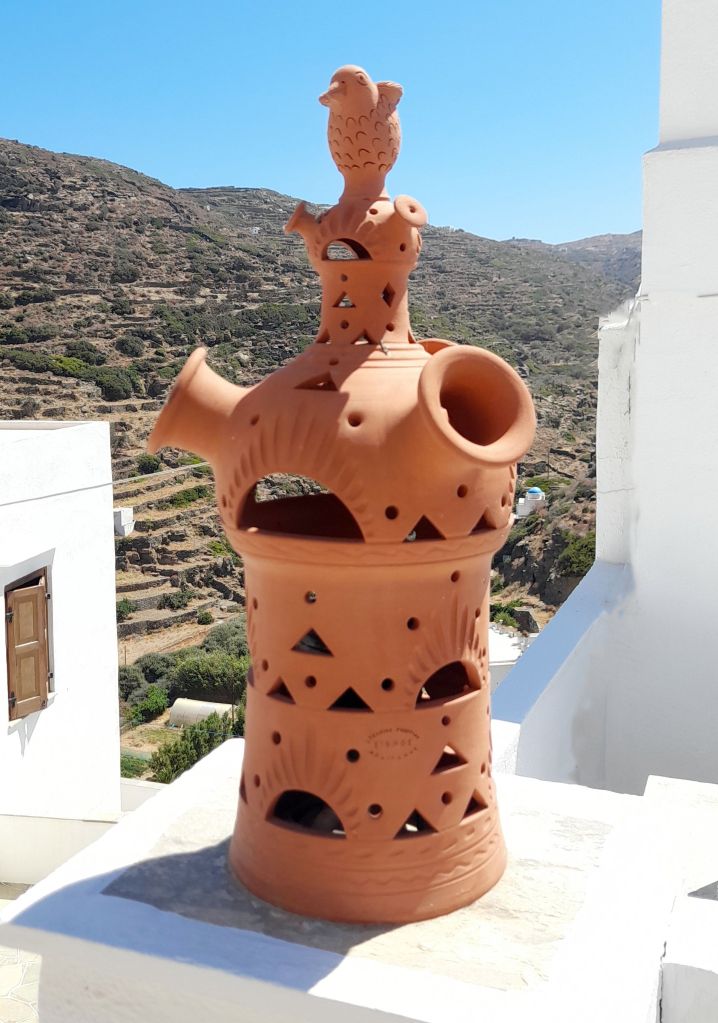
In addition to kitchen utensils such as clay pots, crockery, mugs, etc., artisans also manually produce “flaros”, a kind of finish to place at the tip of the chimney of the houses.
old fashioned cuisine
The clay pots produced on the island usually have a certain destination, as most of the ceramics from Sifnos were developed to go hand in hand with the local cuisine.
An example of this is “revithada”, a chickpea soup that is cooked for many hours in a wood-fired oven in a ceramic called “skepastaria”, suitable for the preparation of this dish. Soup is the main attraction of Sunday lunch.
In the same vein, “mastelo” is also prepared, which is nothing more than lamb or kid meat cooked in a clay pot – with the same name as the dish – with wine and dill (dill).
This delicacy, which also spends hours in the wood-fired oven, is traditional at Easter. However, tourists can easily find the dish in restaurants at other times of the year, such as at Isalos, on Karames beach, near the port.
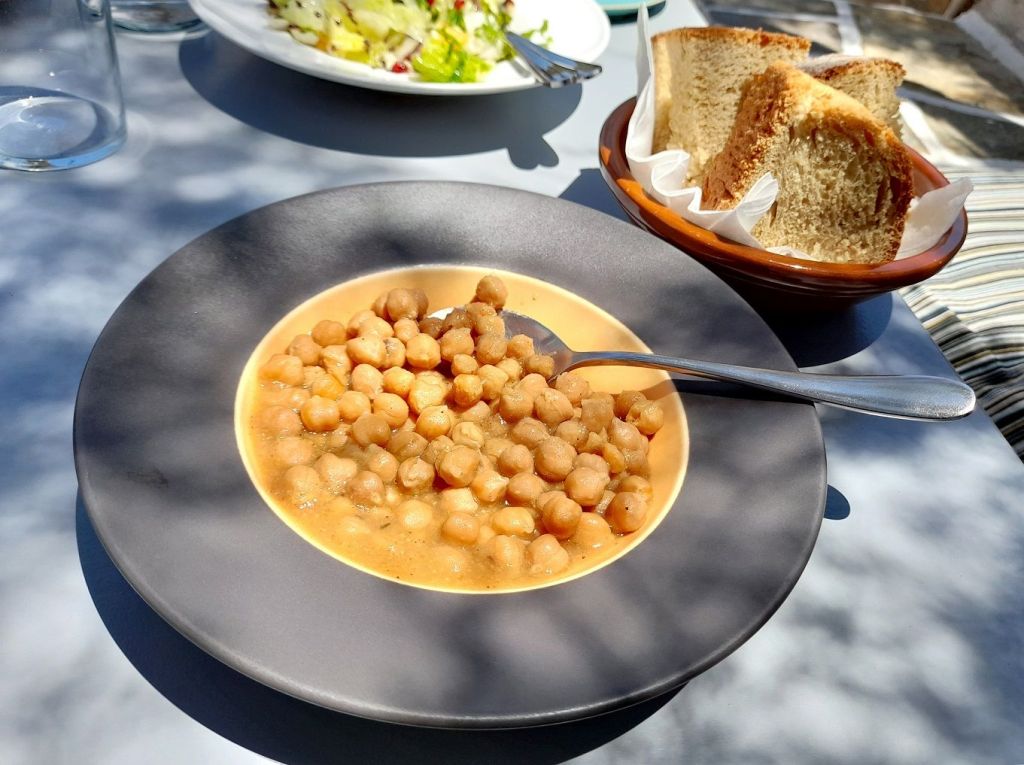
For cheese lovers, the main attraction is the Manoura de Sifnos, which can be made with goat’s or sheep’s milk – two animals predominant in the local fauna.
This cheese is available in two versions: a creamy one, which is used in salads along with olives, capers, olive oil and honey – ingredients that are also traditional in the region – or matured, when it is seasoned with herbs, salt and wine.
Fish and seafood complete the varied menu on the island, with an emphasis on roasted dourado – typical in most beach bars and restaurants – and seafood.
The most common desserts are melopita a kind of honey pie with cheese, the rhizogalus, very similar to a rice pudding, the koulouri which is nothing more than a crunchy biscuit with sesame, and the loli sfnou a pumpkin pie with honey, orange and vanilla.
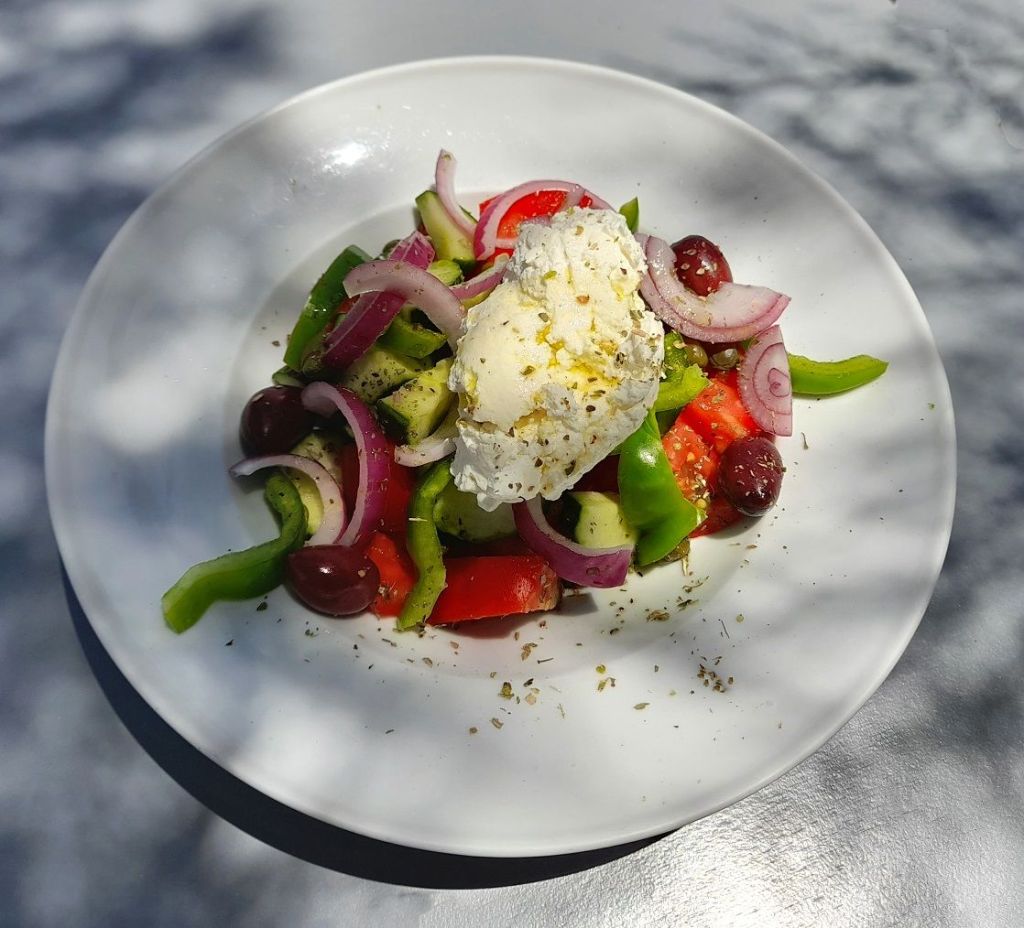
Sifnos also makes a point of remembering the trajectory of his illustrious son, the Greek chef and writer Nicolau Tselementes (1878 – 1958), author of cookbooks and the first to export Greek recipes to the world.
Every year, at the beginning of September, the Gastronomic Festival of the Cyclades Nicholas Tselementes brings together representatives from several islands in the region in Sifnos. They expose the best of their cuisine to the public, including musical and dance performances.
Organic and water-free agriculture
Sifnos also produces a small part of the vegetables that are consumed in the local commerce, however, due to the lack of rain and the high temperatures, some producers were forced to adapt their plantations.
An example of this is the organic farm narlis which has existed since 1925 and for three generations has been adapting fruit and vegetable seeds naturally to be grown without water.
George Narlis the owner of the site, said that his family had to find new ways to grow crops without using water because the river that ran through the property – and which also ran through the entire island – dried up many years ago, leaving farmers hostage to the lack of water from the farms. rains.
On the farm it is common to find watermelons weighing 10 kg that have not received a drop of water to develop. The same goes for melons, pears, pumpkins, tomatoes, potatoes and other fruits and vegetables.
Perhaps the biggest advantage of this production besides saving water is the taste of the food that is indescribable.
Villages, beaches and tours for all tastes
The capital of Sifnos is the charming village of apollonia , located in the center of the island. Its name derives from the worship of the god Apollo, one of the Greek gods represented as the solar deity.
It is in Apollonia that most services are concentrated, such as banks, bakeries, markets, pharmacies and a small medical post for emergencies.
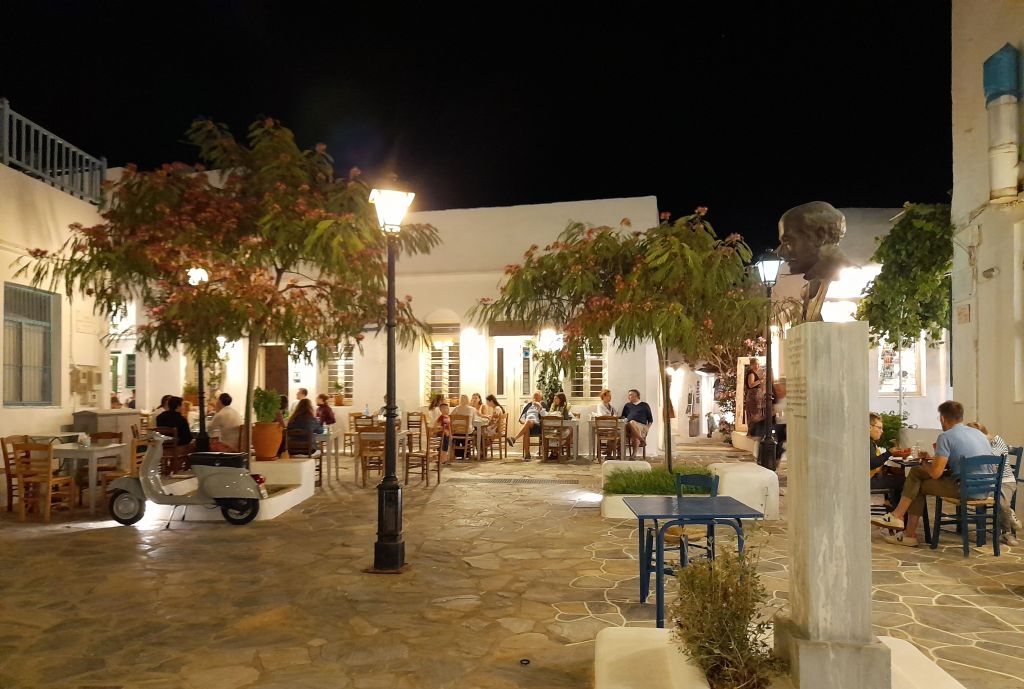
The island’s capital also has small restaurants, bars, a tourist center, hotels and inns. O Sifnos Folklore Museum which is located in the central square, and the alleys lined with shops are the main attractions.
Apollonia is perhaps the best place to stay for those who prefer not to rent a car, as it is well connected to buses that cover the entire island.
About a 20-minute walk from Apollonia is Artemonas the second largest village on the island, so named because it is believed that the site where the church of Panagia Kokhi now stands was the temple of the goddess Artemis, sister of Apollo.
Artemonas was also the symbol of the aristocracy and economic prosperity of the island in the last century, as even today you can see some sumptuous neoclassical houses with gardens full of flowers.
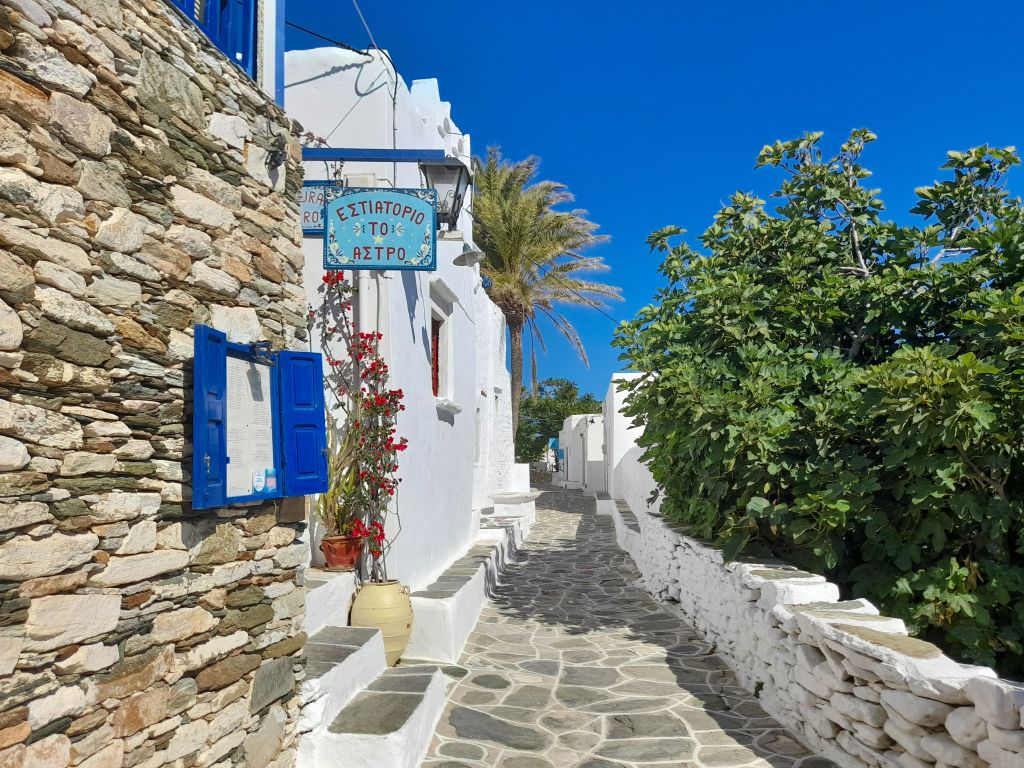
In the region known as Bella Vista (Kallithea, in Greek), there are two windmills that are part of the island’s postcard.
Not far from there is the village of Kastro, a name that derives from the word castle.
Kastro it was chosen to be the first capital of the island because of its geographical position on top of a mountain and for that reason it soon became a medieval village surrounded by walls.
In Kastro is the Archaeological Museum of Sifnos and one of the most photographed churches on the island, Epta Martyres.
The village is perhaps the most charming in Sifnos, with its narrow alleys, covered in marble and full of colorful flowers, the perfect setting for those looking for an unforgettable photo of a traditional Greek village.
For beach lovers with white sand, warm water and crystal clear Vathi, 10 km west of the capital Apollonia, is an excellent option.
The village was formed only by small ceramic producers until the Second World War, but surrendered to tourism after the opening of roads and the arrival of electricity in the place. Nowadays it has several inns, bars and restaurants.
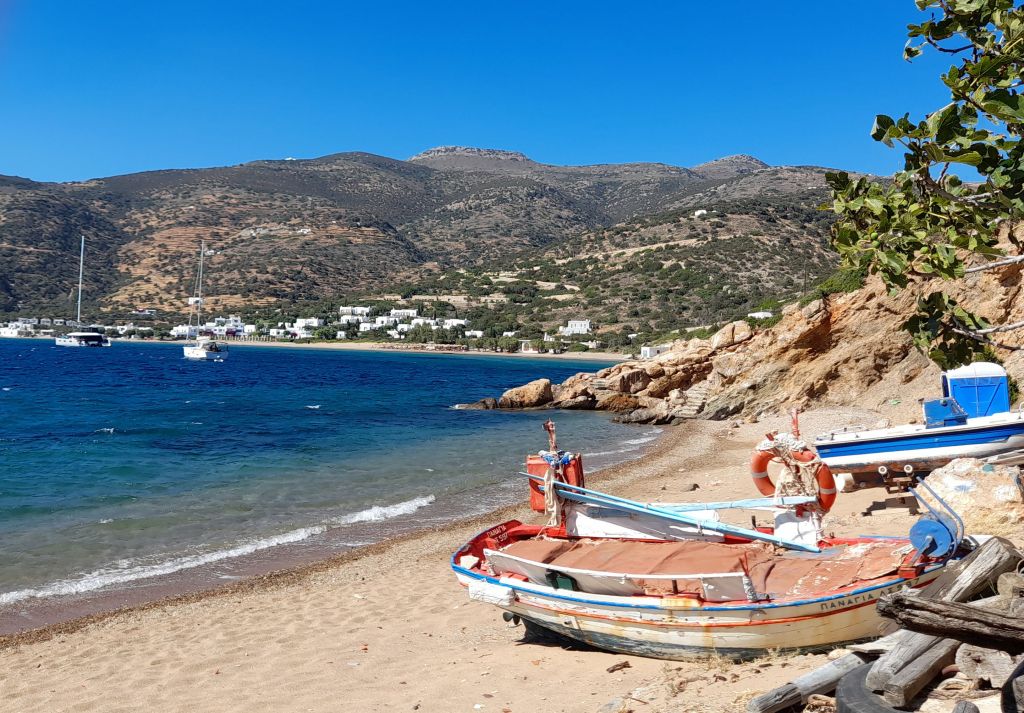
Vathi has the longest beach on the island, archaeological sites in an area known as Punta tou Polemikou and nature trails.
Not far from there is Platis Gialos, another very popular beach with tourists. From there you can see the small island of Kitriani, which is uninhabited and belongs to Sifnos. There is only one church there called Panagia Kitriani which is believed to be the oldest in Sifnos, built between the 10th and 11th centuries.
But for those looking for peace and tranquility, Praia de Herronisos it’s the perfect place – even cell phone signal doesn’t reach there.
Herronisos is an old fishing village that has just two taverns, a small market and a few rooms for rent. The road to this beach is full of curves, but the scenery is worth every minute. The tip here is to bring food, drink and lots of sunscreen.
Churches and Monasteries
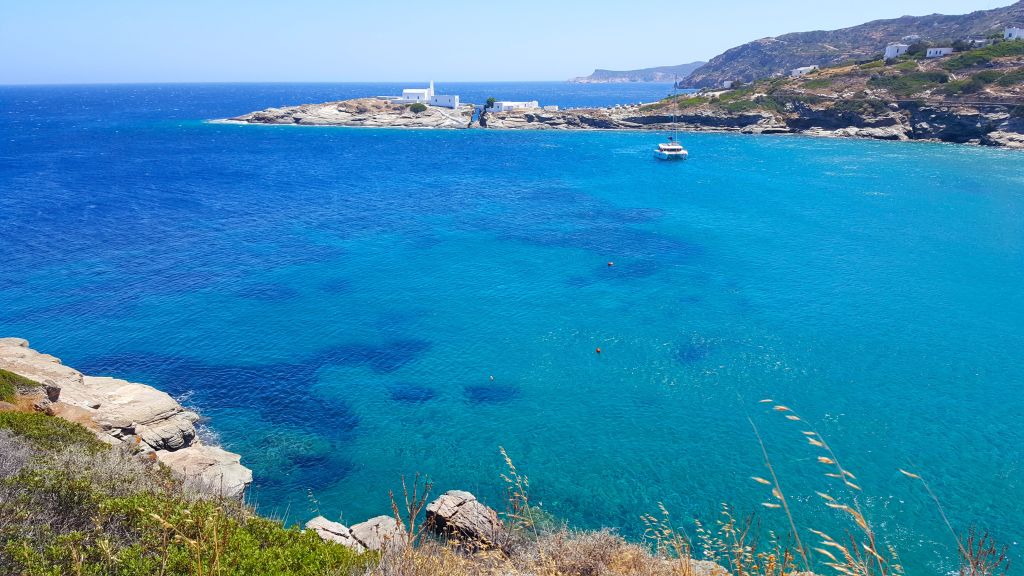
the monastery of Panagia Chrysopigi built in 1650, is undoubtedly the most visited on the island and is located on a peninsula that has separated from the mainland.
According to legend, a miracle would have occurred on the site when the women of Sifnos were trying to take refuge from pirates who were attacking the island. The rock then broke and the invaders ended up drowning.
The monastery is widely used for baptisms and weddings, as well as celebrations such as the traditional “panagiri”, religious festivals with food, music and dances.
At the highest point of the island is the Monastery of Prophet Elias Apsilou , which was built on the site of an ancient acropolis. On the right side of the Monastery is the chapel of Agios Elisaiou.
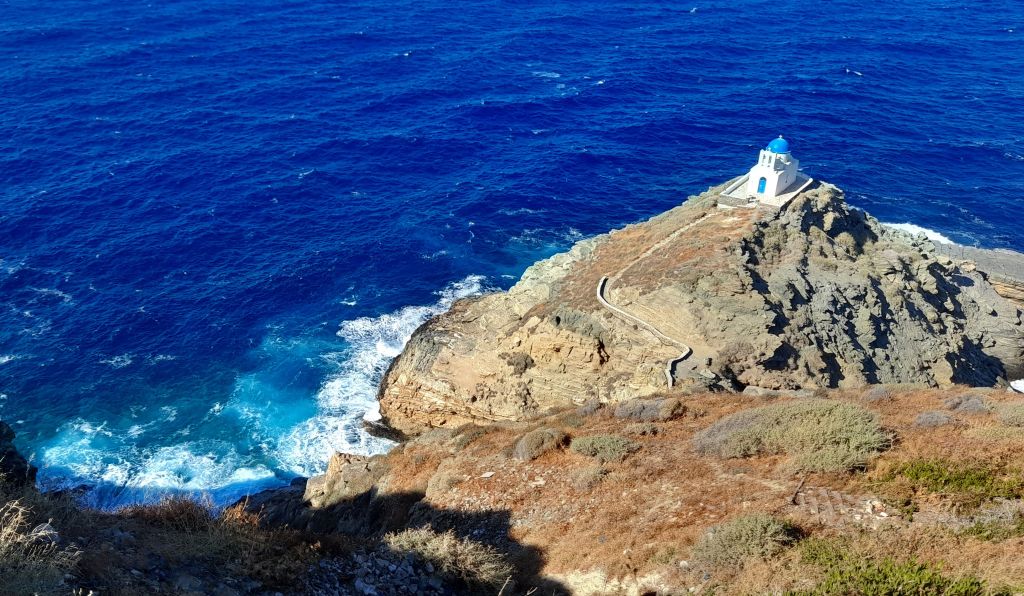
But for those looking for a small church, but with a spectacular view from the top of the mountain and with a beautiful sunset, Agios Simeon it’s the perfect location. The road to reach this chapel is steep, narrow and curvy, but the landscape makes up for the journey.
In all, Sifnos has 237 churches spread across the island.
How to get to Sifnos
International visitors should use Athens, Mykonos or Santorini international airport and travel to Sifnos by ferries.
The journey from the port of Piraeus in Athens on a conventional ferry can take between 5 and 6 hours, while the high-speed ferry takes between 2 and 3 hours.
Sifnos also has a helipad at Tholos, in the north of the island.
Source: CNN Brasil
Bruce Belcher is a seasoned author with over 5 years of experience in world news. He writes for online news websites and provides in-depth analysis on the world stock market. Bruce is known for his insightful perspectives and commitment to keeping the public informed.







